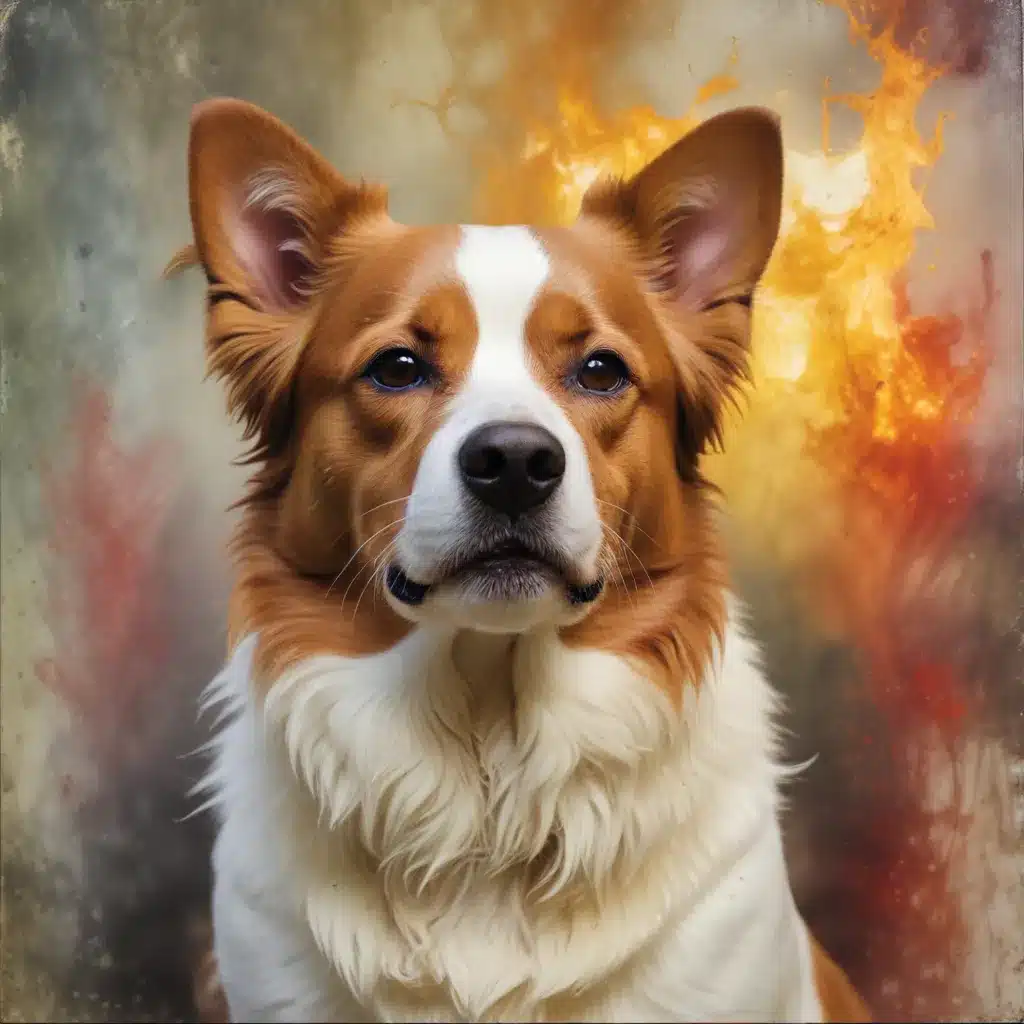
In the captivating world of artistic expression, there exists a medium that blends the ancient allure of wax with the primal energy of fire – the enchanting art of encaustic. This captivating technique, with its roots tracing back to ancient Greece, has found a resurgence in modern times, captivating the hearts and imaginations of artists worldwide, including those with a penchant for capturing the essence of our beloved animal companions.
Wax as a Painting Medium
The Properties of Wax
Wax, in its various forms, has long been a cherished material in the realm of art, prized for its unique physical properties and the intriguing visual effects it can produce. Whether it’s the translucent luminosity of beeswax, the creamy smoothness of paraffin, or the bold, textural qualities of damar resin, wax offers artists a versatile and expressive medium to explore.
Advantages of Wax in Art
The appeal of wax-based paints lies in their ability to create rich, dimensional surfaces, their inherent luminosity, and their adaptability to a wide range of techniques. Encaustic, in particular, allows artists to build up layers of wax, fusing them together with heat to create a depth and vibrancy that can be difficult to achieve with other media. This makes it an ideal choice for capturing the intricate details and captivating expressions of our beloved animal companions.
The Encaustic Process
Heating and Applying Wax
At the heart of encaustic art is the process of heating and fusing layers of wax-based paint. Artists begin by melting the wax-based medium on a heated palette, then applying it to a prepared surface, such as wood or canvas, using a variety of tools, from brushes to palette knives. The key to encaustic success lies in the delicate balance of temperature, allowing the artist to manipulate the wax and create the desired effects.
Fusing Techniques
Once the wax has been applied, the artist must then fuse the layers together, using a heat source such as a heat gun, blowtorch, or encaustic iron. This process of fusing the wax not only creates a cohesive and durable surface but also allows for the incorporation of various techniques, such as scraping, incising, and embedding materials within the wax.
The Art of Encaustic Pet Portraiture
Capturing Animal Likeness
When it comes to creating captivating pet portraits in encaustic, the artist’s ability to capture the essence and likeness of the subject is paramount. This begins with a strong foundation in observational drawing, carefully studying the unique features and expressions of the animal. Many encaustic artists also rely on photographic reference to aid in their process, using images as a starting point for their wax-based creations.
Wax Techniques for Fur and Features
Translating the intricate textures and details of a pet’s fur, eyes, and other features into the encaustic medium requires a mastery of various wax-based techniques. Layering and texturing the wax can create the illusion of soft, lush fur, while carefully applied brushstrokes and palette knife work can capture the delicate contours of a nose or the piercing gaze of an animal’s eyes. The versatility of encaustic allows artists to achieve a level of depth and realism that can be truly captivating.
Emotional Expression in Pet Portraits
Beyond the technical prowess required to render a pet’s likeness, the most compelling encaustic pet portraits are those that succeed in conveying the personality and emotions of the subject. Through the strategic use of color, tonal range, and expressive mark-making, encaustic artists can imbue their works with a sense of warmth, playfulness, or even melancholy, allowing the viewer to connect with the subject on a deeper, more visceral level.
The Role of Fire in Encaustic Art
Heating and Fusing the Wax
The integration of fire into the encaustic process is a crucial aspect of this medium, as it allows artists to manipulate the wax in ways that are simply not possible with other painting techniques. The use of heat sources, such as heat guns, torches, and encaustic irons, enables the artist to fuse the layers of wax, creating a seamless and durable surface.
Incorporating Fire Techniques
Beyond the fundamental act of fusing the wax, encaustic artists can also employ fire-based techniques to achieve unique visual effects. Scorching the surface of the wax can create textural and chromatic variations, while the technique of sgraffito – where the artist incises or scratches into the wax – allows for the incorporation of additive and subtractive elements within the composition.
The Magic of Encaustic Art
Unique Visual Qualities
The encaustic medium is renowned for its luminous and dimensional qualities, with the interplay of layered wax creating a sense of depth and visual intrigue. The organic and tactile nature of the material also lends itself to a sensory experience for both the artist and the viewer, inviting them to engage with the work on a more intimate level.
Artistic Experimentation
The versatility of encaustic painting allows artists to combine it with a variety of other mediums, from photography to mixed media, further expanding the possibilities for artistic expression. Additionally, the medium lends itself well to abstract explorations, where the inherent qualities of the wax can be celebrated in their own right, independent of representational subject matter.
As you embark on your own journey into the captivating world of encaustic pet portraiture, embrace the magic of this medium, where the ancient allure of wax and the primal energy of fire converge to create truly mesmerizing works of art. Discover the unique visual qualities, the depth of emotional expression, and the endless possibilities for artistic exploration that encaustic has to offer. The Pencil & Paint Muse community is here to guide you every step of the way, sharing techniques, insights, and inspirations to help you unlock the full potential of this remarkable artistic medium.